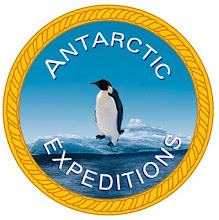The race to the South Pole
Norwegian Roald Gravning Amundsen, who had been part of the de Gerlache expedition that wintered in Antarctica, set sail from Christiana (modern-day Oslo) in 1910 in a bid to be the first man to reach the North Pole. When he heard American Robert Peary had already reached the North Pole, Amundsen did a literal about-face. Aware of Robert Scott’s rival expedition, Amundsen secretively headed south. Setting out from his Ross Ice Shelf base on 19 October, 1911. Amundsen and four others headed for the Pole. The planning was meticulous: Amundsen took three or four backups for every critical item and set up 10 well-marked depots down to 82° south. On 14 December, 1911. Amundsen and his party reached the South Pole, claiming it for Norway. Amundsen left a tent at the Pole with a note inside for Scott to read.
Meanwhile, Robert Falcon Scott’s second expedition was preparing another sortie and was desperate to beat Amundsen to the South Pole. He sailed from New Zealand in November 1910, and a team of five made a final push to the Pole on 2 October the next year. The journey was impossibly difficult, and they reached the Pole only to find that Amundsen had been there 23 days earlier.
Crossing the Antarctic by land - Shackleton
1914 In early December, Shackletons’ ill-fated “Endurance” entered the Weddell Sea only to be trapped in the icepack by 19 January, 1915. Their ship sank in November that year. The crew were not able to save their life boats or supplies but escaped themselves to Elephant Island. Shackleton decided to leave most of the party behind, while he set out in a boat to reach South Georgia, the nearest inhabited island, 800 miles away. He knew that he would find help there, at the Norwegian whaling stations on the north side. He and five others left in the best of their ship’s boats, the James Caird, which was 7 meters long and 2 meters wide. Although it was winter and the Southern Ocean is the stormiest in the world, they knew the plan was their best hope for the survival of the whole party. When the six set sail, the rest of the group were left behind to make camp on Elephant Island.
Fortunately, in April 1916, Shackleton and his party reached the South Georgia Islands and in August 1916 Luis Pardo Villalón commanding the Yelcho, a totally inappropriate little Chilean tugboat, set off to the rescue.



No comments:
Post a Comment